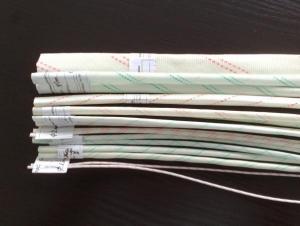Fiberglass Roving: The Unsung Hero of Composite Fabrication
In the world of composite materials, there’s a silent hero that often goes unnoticed but plays a pivotal role in the fabrication process. This unsung hero is none other than fiberglass roving. Made from continuous strands of glass fiber, this material is a key component in creating strong, lightweight composites that are used in a wide range of industries, from aerospace to automotive, marine, and even sports equipment.
The Journey of Fiberglass Roving
Fiberglass roving starts its journey as a raw material, a mixture of silica sand, soda ash, and limestone. Through a process of melting, forming, and cooling, these ingredients are transformed into fine strands of glass fiber. These strands are then woven together to create the roving, which can vary in size from thin, delicate threads to thicker, more robust strands.
The Role of Fiberglass Roving in Composite Fabrication
Fiberglass roving is the backbone of composite fabrication. It provides the structural integrity and strength to the composite materials. When combined with a resin, the roving forms a matrix that is both lightweight and incredibly strong. This combination is what makes composite materials so desirable in various industries.
The Manufacturing Process
The manufacturing process of fiberglass roving is both an art and a science. It involves precise control of temperature, tension, and speed to ensure the quality and consistency of the final product. The process begins with the melting of raw materials, which is then followed by the drawing of the molten glass into fine strands. These strands are cooled and gathered into roving, which is then wound onto spools for further use.
The Benefits of Using Fiberglass Roving
One of the most significant benefits of using fiberglass roving in composite fabrication is its strength-to-weight ratio. Fiberglass composites are much lighter than traditional materials like steel or aluminum, yet they offer comparable strength. This makes them ideal for applications where weight savings are crucial, such as in aerospace or automotive industries.
Another benefit is the versatility of fiberglass roving. It can be tailored to meet the specific needs of various industries. For instance, it can be used to create high-strength, low-weight components for aerospace applications, or it can be used to produce durable and impact-resistant parts for the automotive industry.
The Challenges of Working with Fiberglass Roving
Despite its many benefits, working with fiberglass roving also presents some challenges. One of the main challenges is the handling of the material. Fiberglass roving can be delicate and requires careful handling to avoid damage. Additionally, the process of combining the roving with resin can be complex and requires a skilled workforce.
Environmental Impact and Sustainability
The environmental impact of fiberglass roving and its production process is a topic of concern. While the material itself is non-toxic, the manufacturing process can generate harmful byproducts if not managed properly. However, advancements in technology and production methods are being made to minimize the environmental footprint of fiberglass roving production.
The Future of Fiberglass Roving in Composite Fabrication
As industries continue to evolve and new applications for composite materials emerge, the demand for fiberglass roving is expected to grow. With ongoing research and development, we can expect to see improvements in the quality, performance, and sustainability of fiberglass roving. This will further solidify its position as a key player in the composite fabrication industry.
In Conclusion
Fiberglass roving may not always be in the spotlight, but its importance in the world of composite materials cannot be overstated. From its humble beginnings as raw materials to its transformation into a high-performance material, fiberglass roving has come a long way. Its unique combination of strength, lightweight, and versatility makes it an indispensable asset in the fabrication of composite materials. As we look to the future, it’s clear that fiberglass roving will continue to play a crucial role in shaping the world of composite fabrication.

